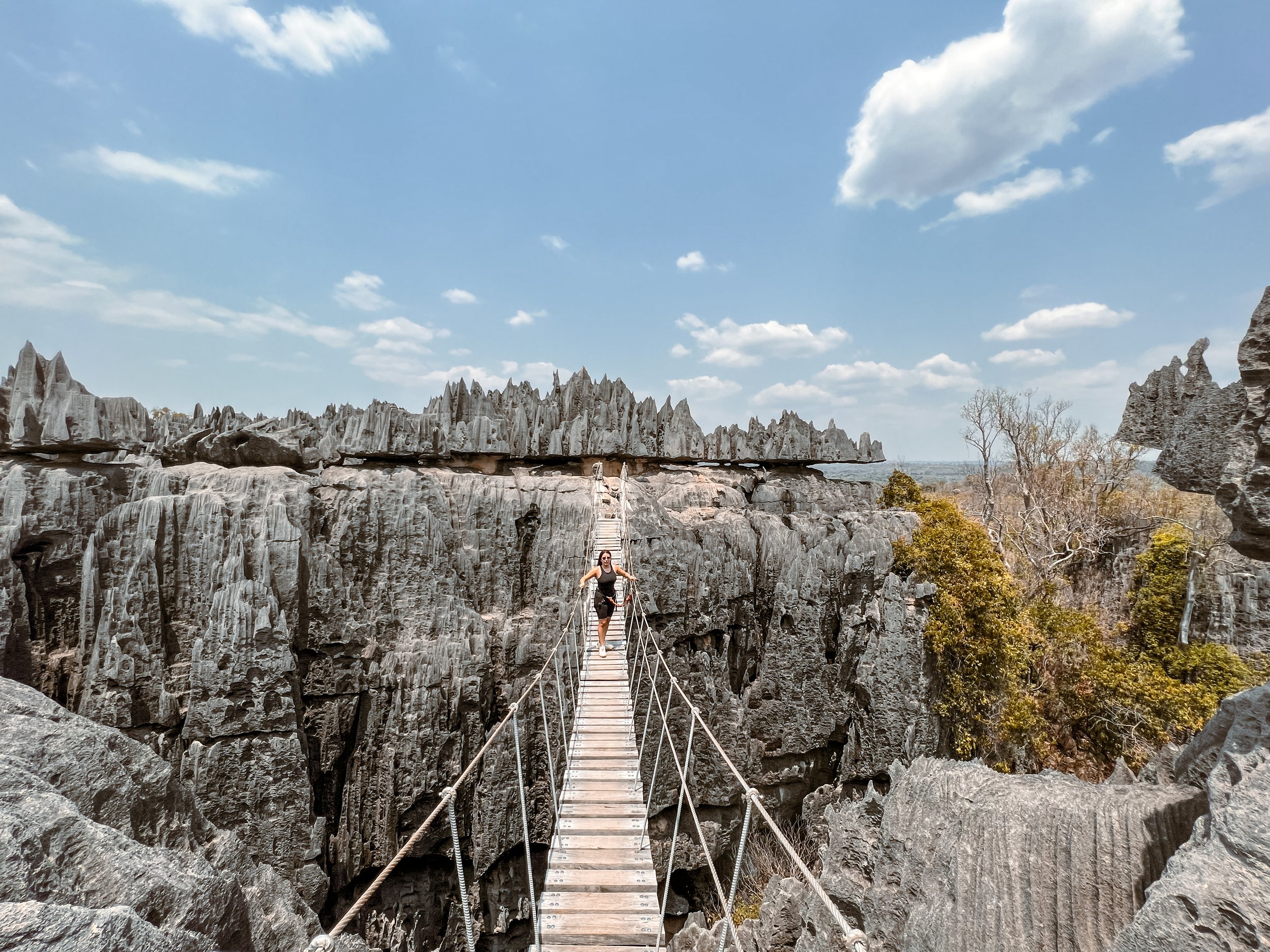Madagascar, a hidden gem in The Indian Ocean
Madagascar its colloquial name the Great Red Island
Before traveling to Madagascar, I’ll admit I knew very little about the country. It first caught my interest after watching President Obama’s documentary on National Parks, where they showcased the stunning Tsingy park, which I’ll describe in a bit.
For many, Madagascar is known mainly due to the animated movie, but in reality, it remains a largely unknown and mystifying destination. Located in the Indian Ocean off the east coast of Africa, it is one of the world’s poorest countries, yet home to breathtakingly unique flora and fauna, such as towering baobab trees, vibrant chameleons, and playful lemurs.
Many people ask about traveling in Madagascar: Is it safe? Affordable? While you can travel safely here, it’s not a place I’d recommend exploring solo or attempting to backpack through. Most travelers have a guide or driver with them for the duration of their stay. For example, on the route from Tsingy to Morondava, we were escorted by soldiers in a convoy of tourist vehicles—a security measure coordinated by the government and tourism agencies. Madagascar is very affordable, comparable to Southeast Asia, though flights here can be costly, with occasional deals from France and Italy.
Madagascar is a country of profound contrasts and surprising beauty. The people are warm, friendly, and soft-spoken, except for the children, who greet travelers with shouts of excitement and broad smiles, running toward cars in the villages and calling out, “Salut faza!”—meaning “Hi, foreigner!” Despite being the poorest country I have visited to date, Madagascar is also among the most unique and beautiful.
My adventure began in Antananarivo, or "Tana," the capital. For my first night, I stayed in a charming French-style boutique hotel, unknowingly setting the tone for a culinary journey that would delight me for the entire trip. From Tana, I flew to Morondava, where I met my guide for the next three days. Our first stop, about an hour into the drive, was Baobab Avenue. The sight of these ancient, giant trees felt surreal—they’re arguably the country's most iconic feature. By nightfall, we reached Bekopaka, after a full day of travel.
On this journey, I encountered fellow travelers drawn by Madagascar’s remote allure. Many were photographers for major networks, marine biologists, anthropologists, and NGO workers. It was clear that Madagascar attracts a unique type of visitor, beyond the usual tourist crowd. There’s a constant scent of burning in the air, a result of the “cut and burn” agricultural practice that is prevalent here.
The next day, our guide took us on a canoe ride followed by a one-hour trek to Tsingy de Bemaraha National Park. This hike was unlike any I’d done before. After an hour of easy walking, we reached the Tsingy, or “sharp rocks.” Here, wearing a harness, you climb up with your guide’s assistance for another 15-20 minutes to reach the peak. It’s a must for any adventurer, though I wouldn’t recommend it for those with a fear of heights. We returned to Morondava the following day, stopping again at Baobab Avenue to catch the sunset—a scene straight out of a dream.
On our fourth day, we flew from Morondava to Tana and then to Nosy Be. Nosy Be is an island encircled by pristine beaches, perfect for water activities. Many travelers I met said it was the closest they’d seen to the Maldives. I stayed at a beachfront hotel owned by a French couple, and the cuisine—due to Madagascar’s colonial history—offered an impressive array of French flavors.
Nosy Be was all about relaxation. Among the activities, I went kayaking around the island and even took a wildlife-spotting tour. Another can’t-miss excursion is Nosy Iranja, where, if you’re lucky, you can see sharks. I also joined a snorkeling tour to Nosy Sakatia, where swimming with giant turtles was a highlight.
One thing often left unmentioned about Nosy Be is its darker side: the island is known for its sex trade. It’s common to see European men traveling directly from countries like Italy or France, often in questionable company. This unfortunate reality has made Nosy Be one of the more developed areas in Madagascar, but not for the right reasons.
After five relaxing days on Nosy Be, I flew back to Tana for my final night. I arranged a private tour of the city’s notable sites, but overall, I wouldn’t recommend staying in Tana for more than a day or two. It feels unsafe and lacks much of the country’s natural beauty.
Would I recommend Madagascar to everyone? No. This destination is best suited for a certain type of experienced traveler. If you’re considering a trip, I’d want to get a good sense of your past travel experiences, the types of activities you enjoy, and your preferred accommodation style. This journey has the potential to be truly extraordinary—possibly one of the best experiences of your life—but we need to do our homework first. Together, we’ll align your expectations with the unique reality of this adventure, ensuring it’s an unforgettable journey for all the right reasons.






